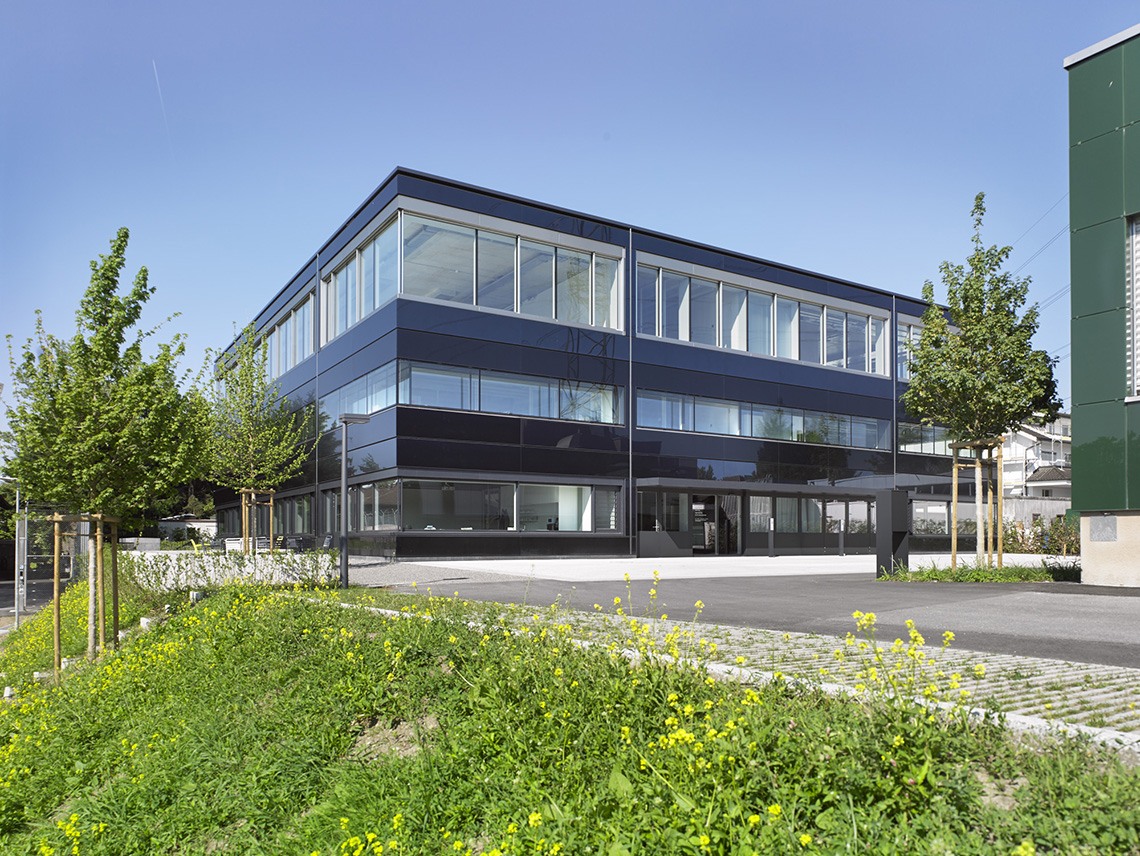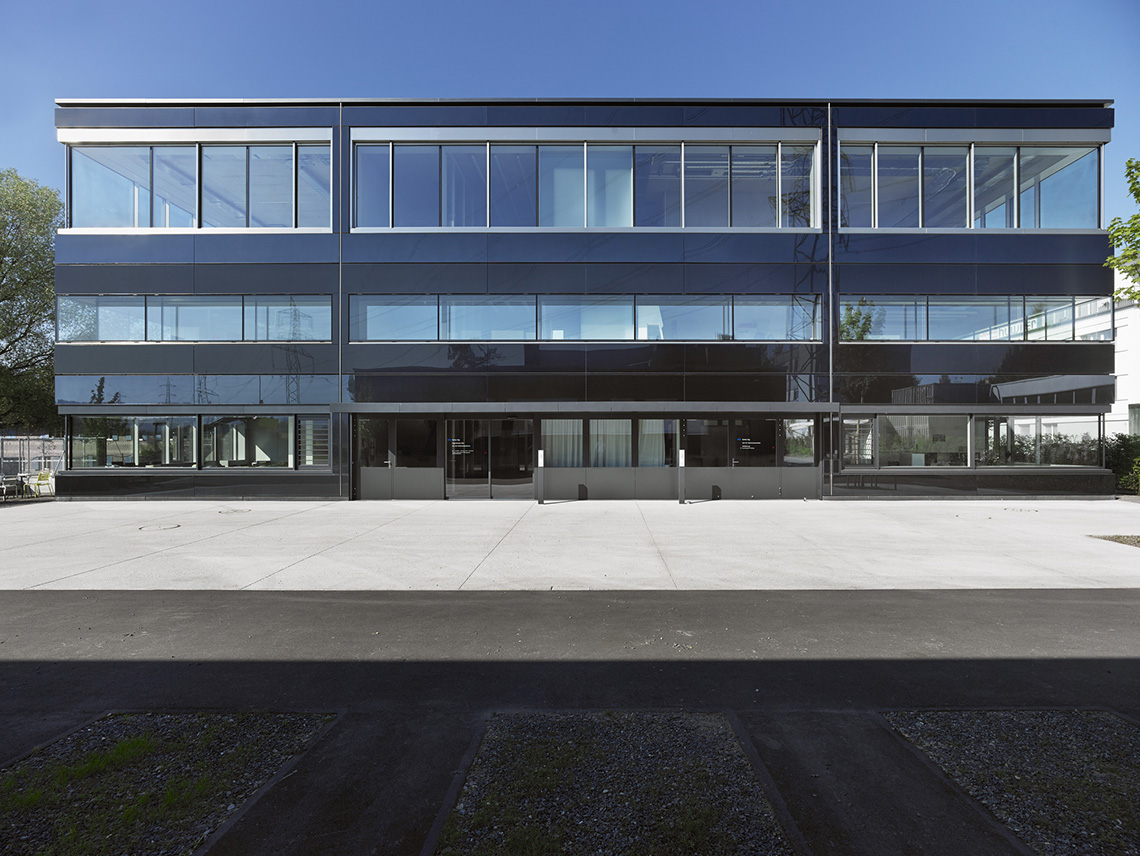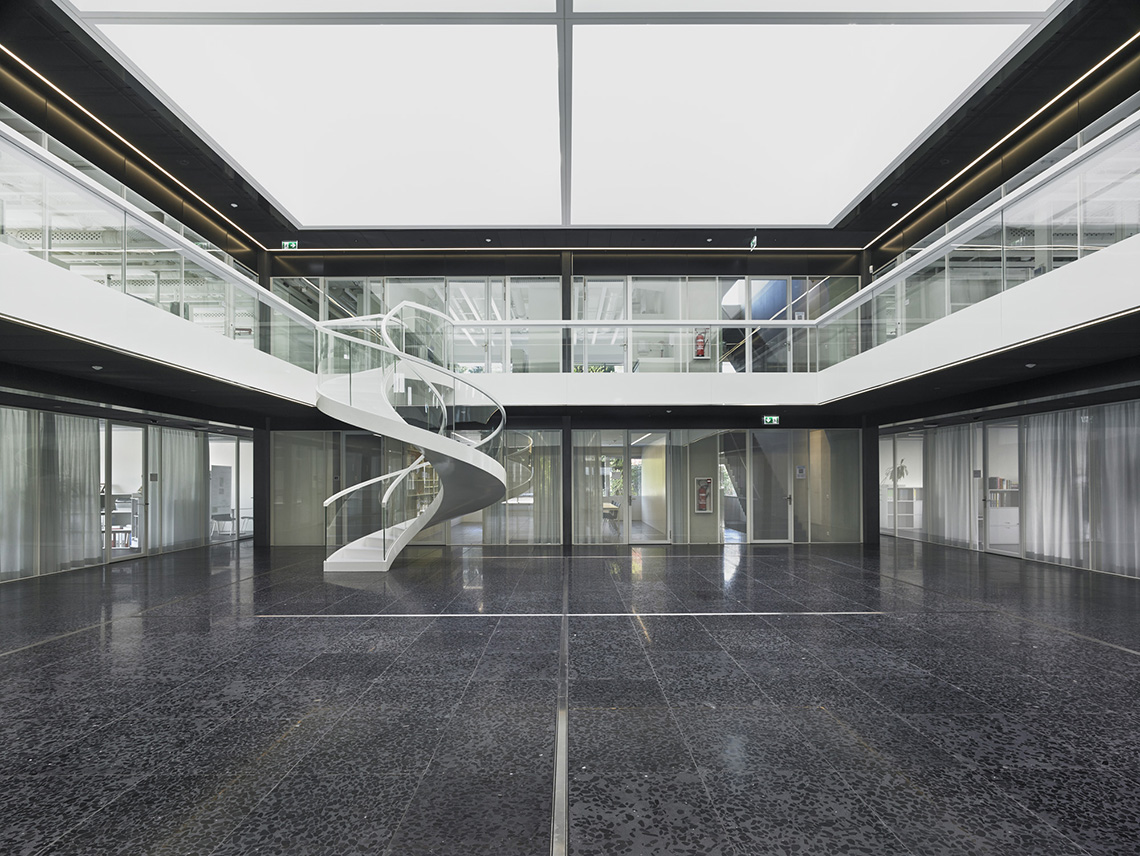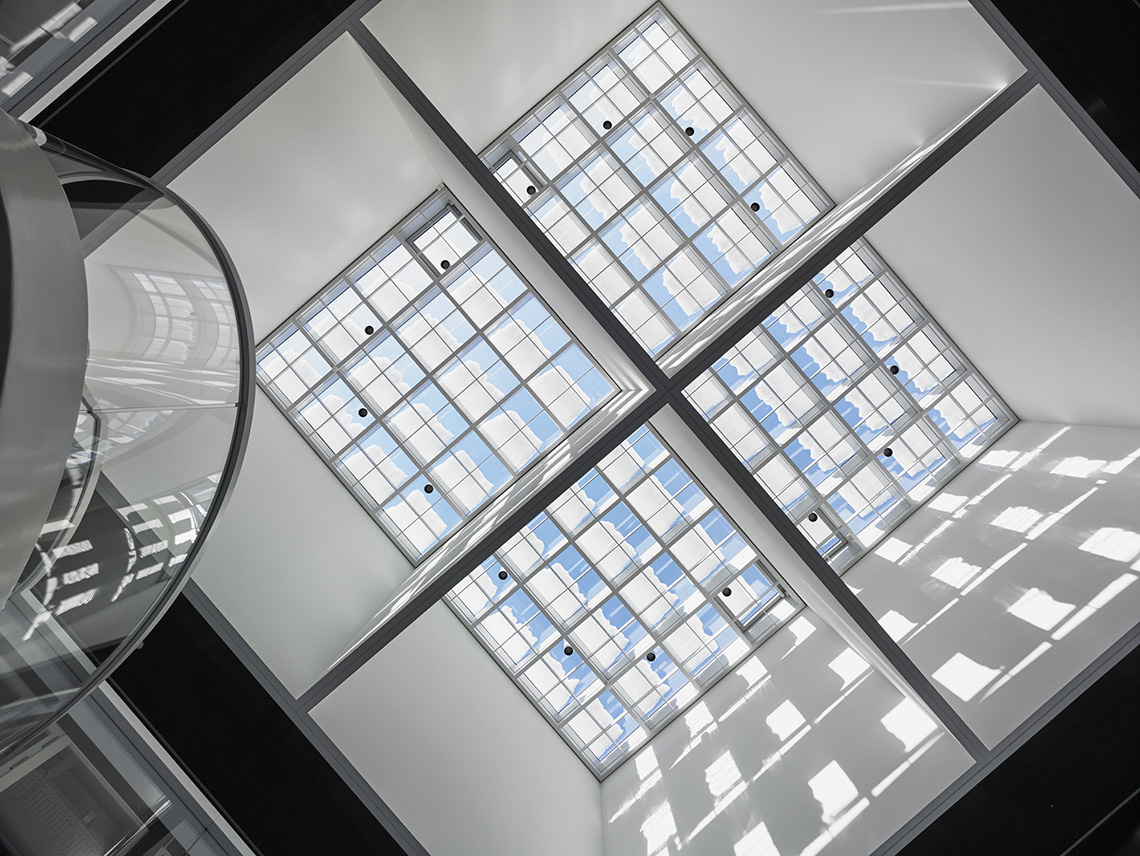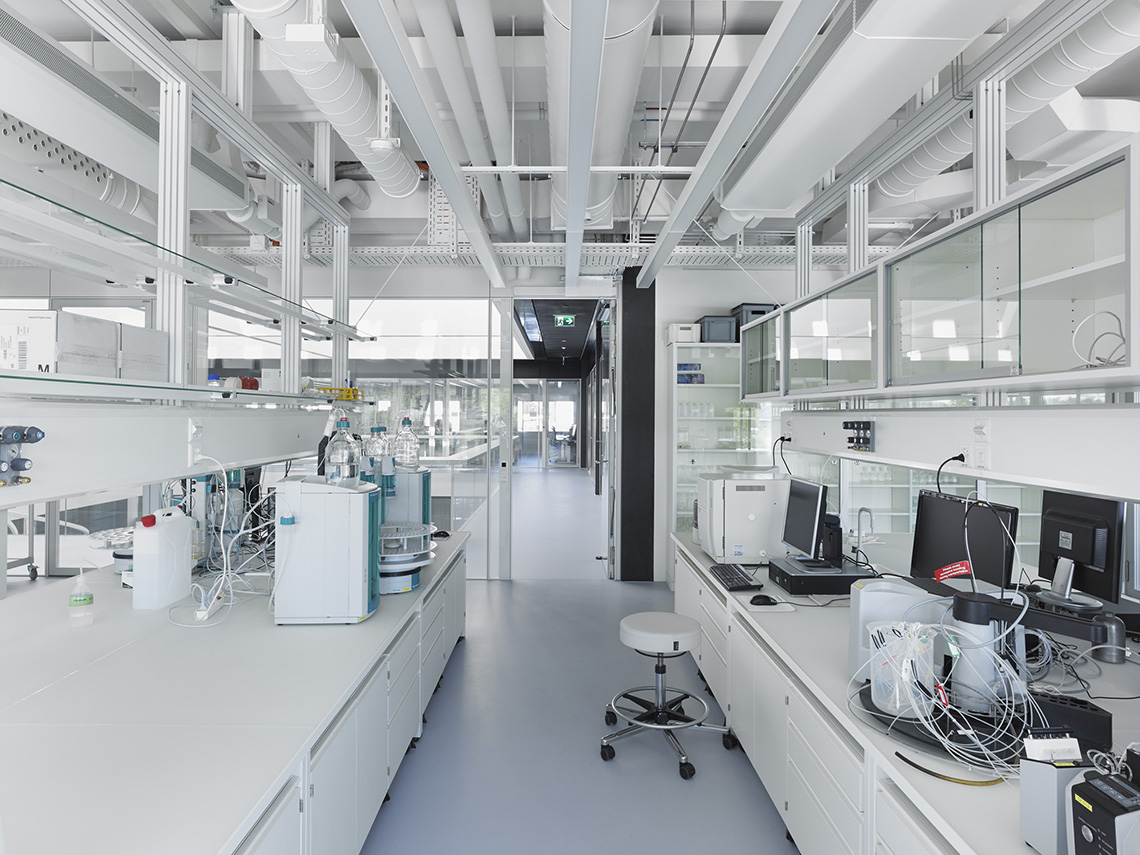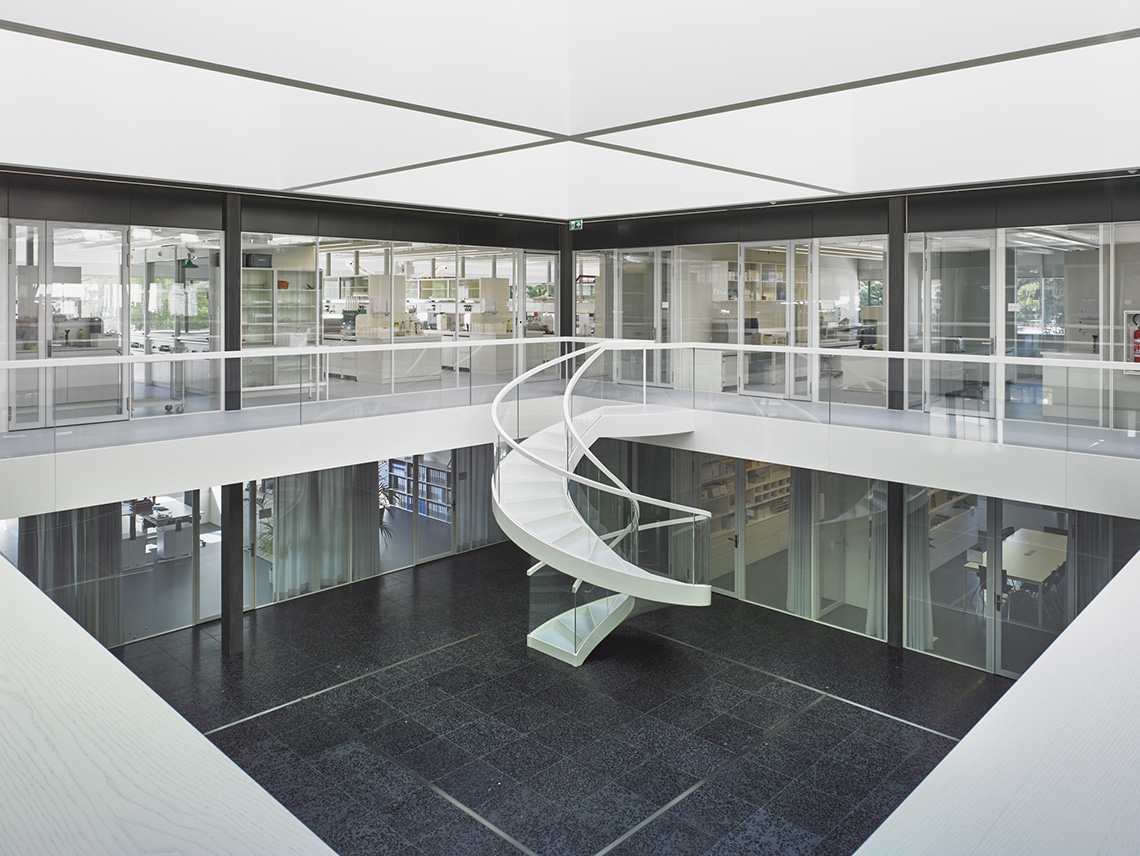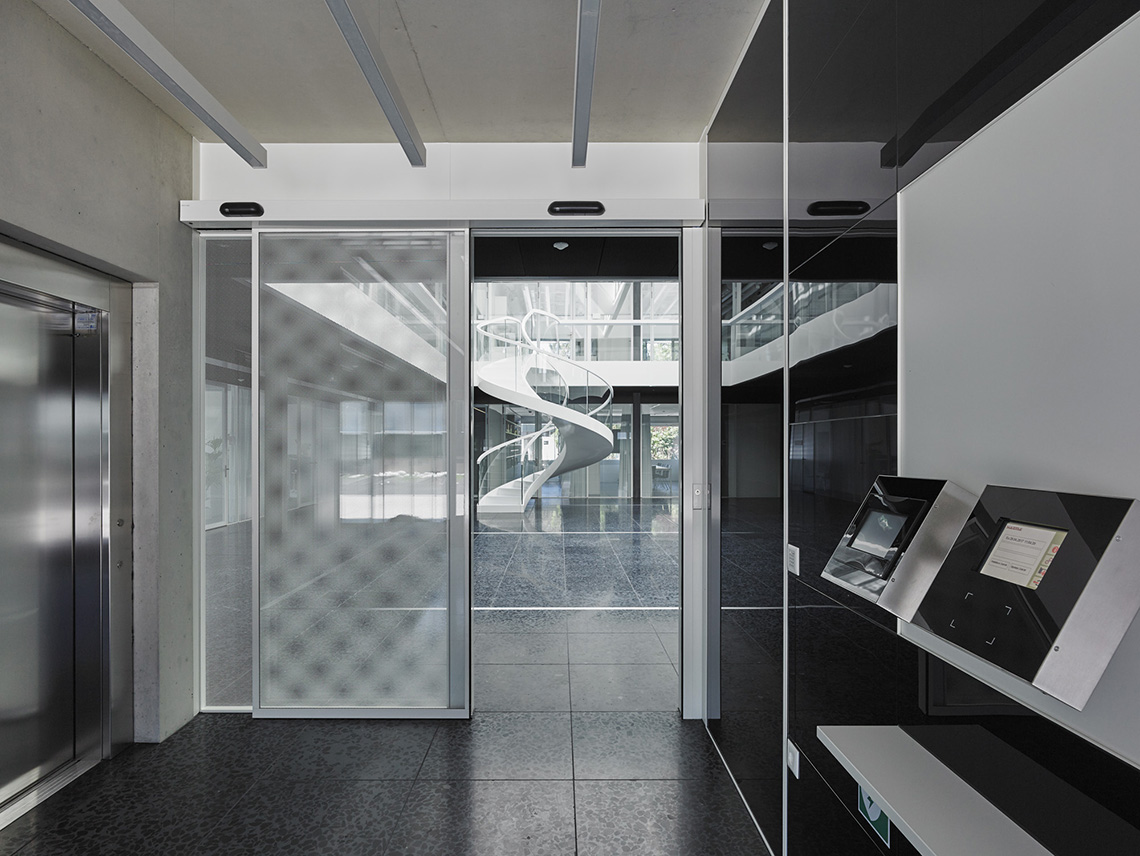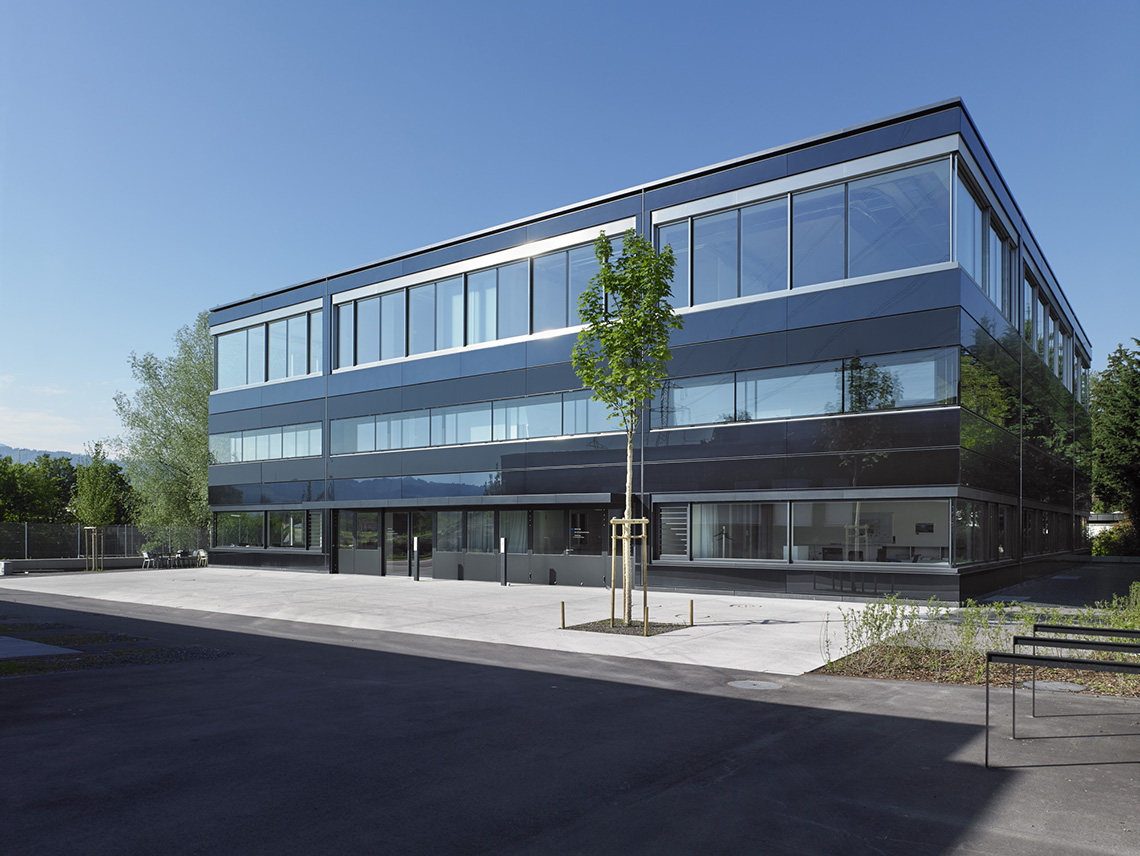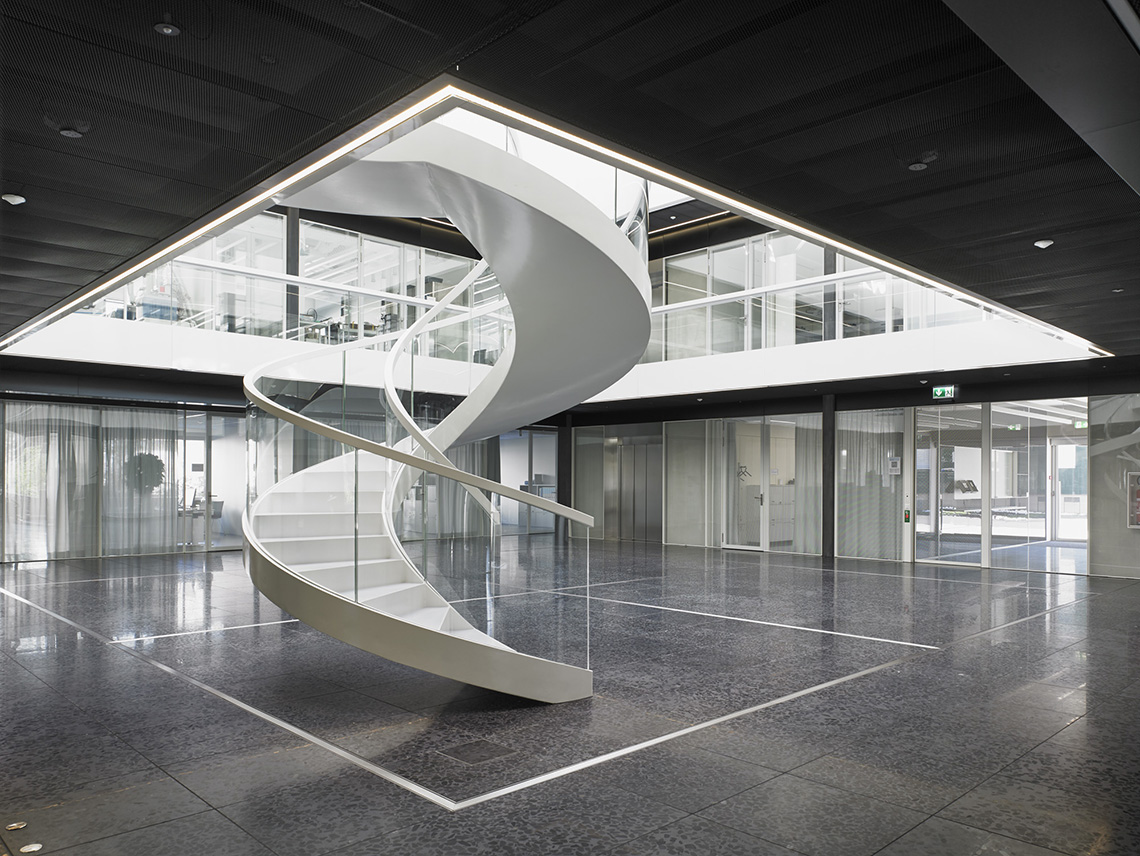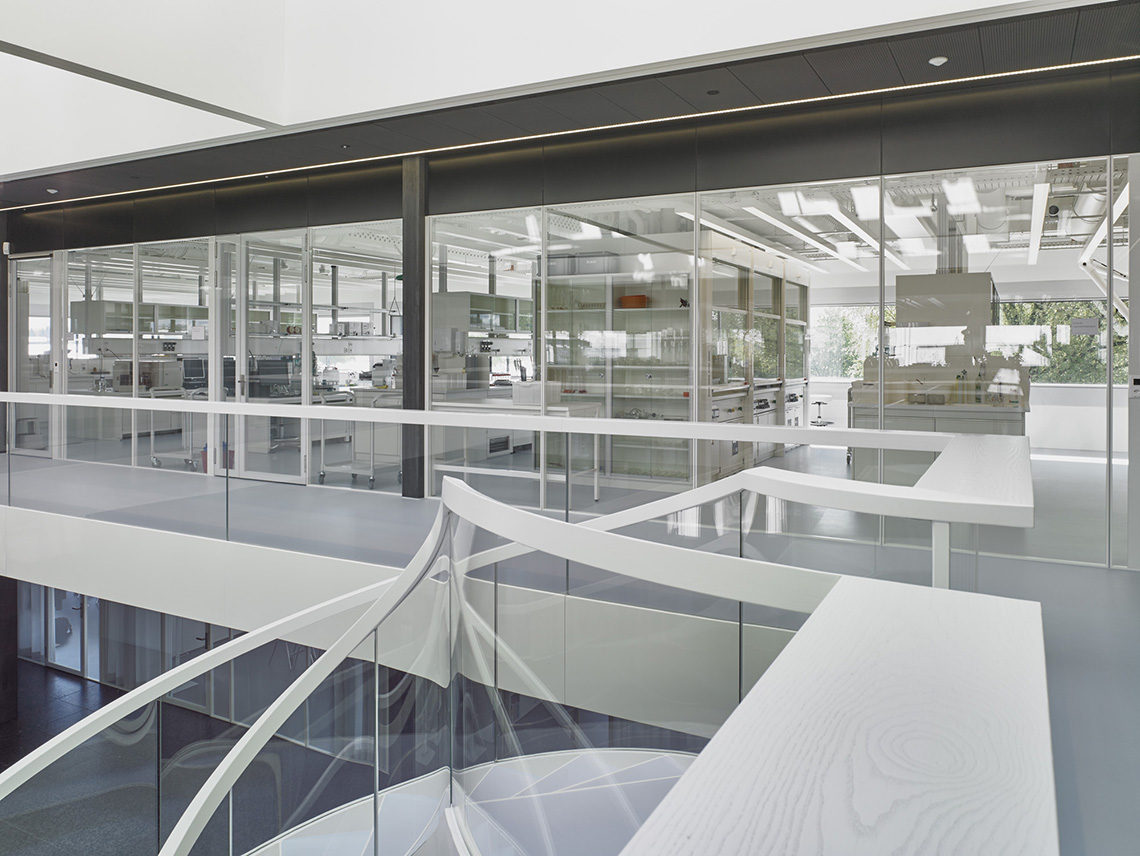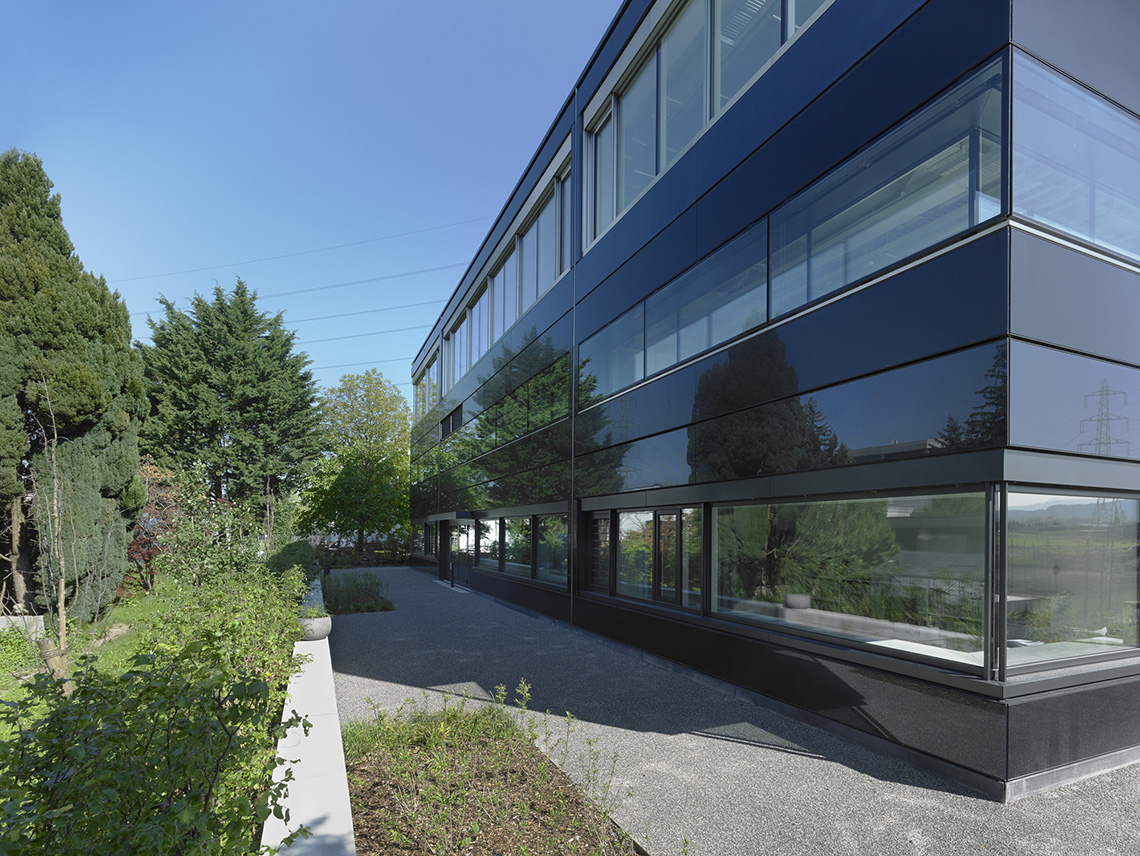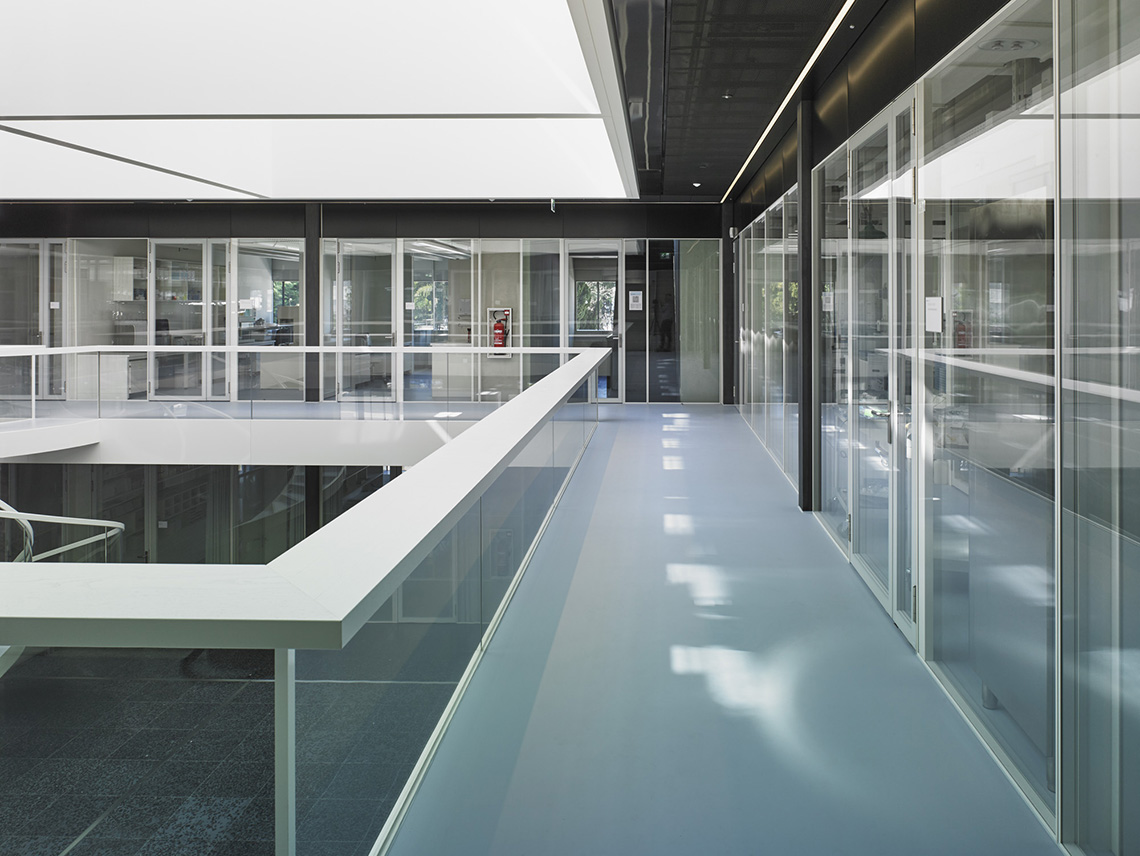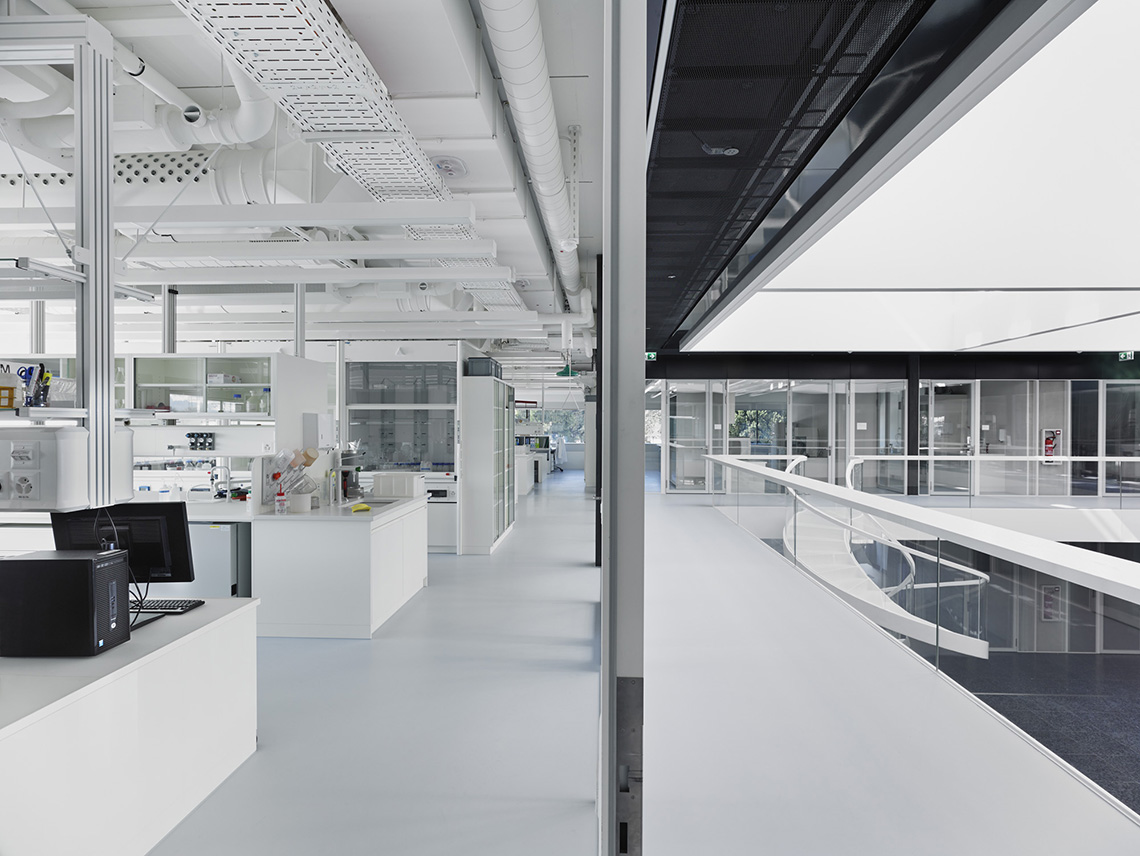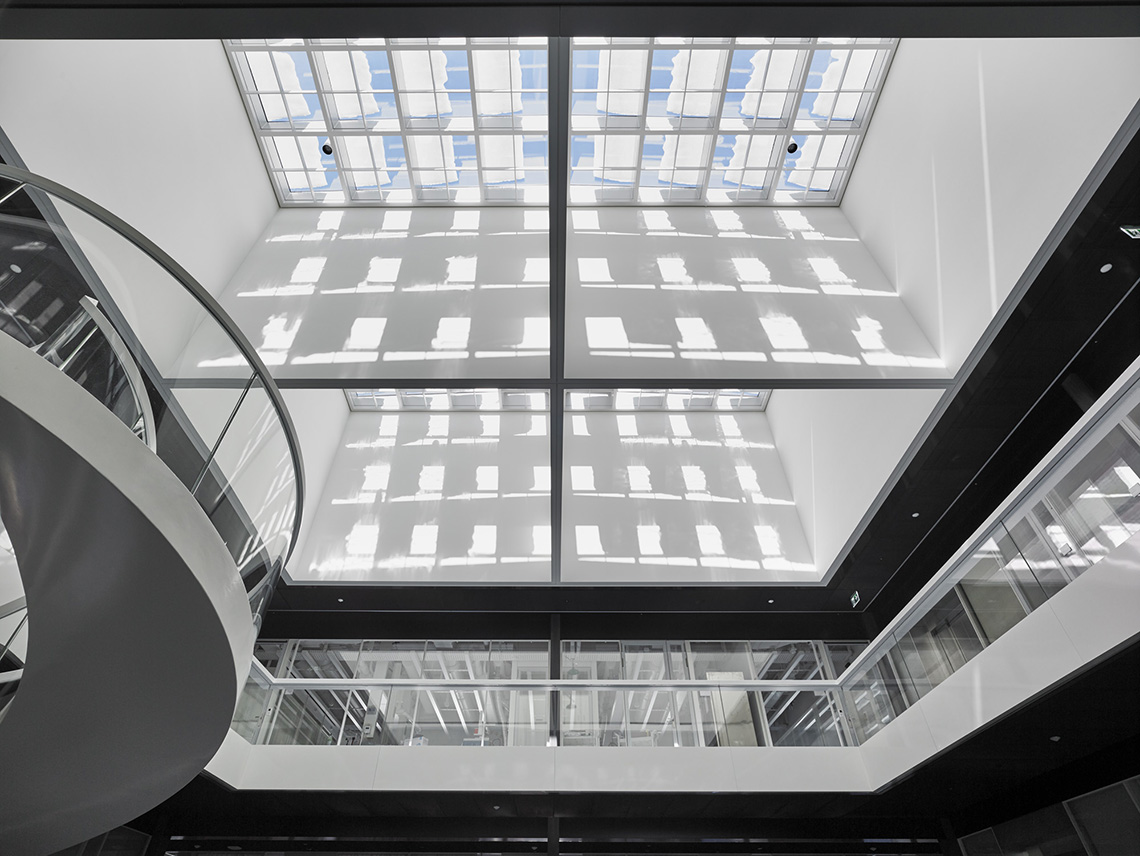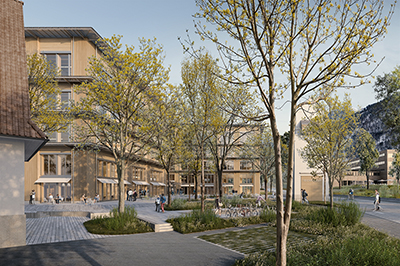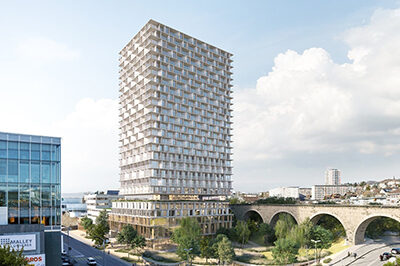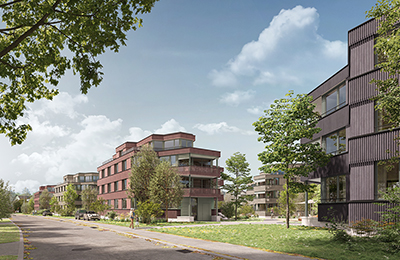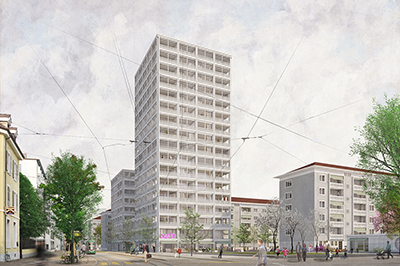
New construction of laboratory and administration building, Office for Consumer Protection (AVS), Steinhausen
| Client | Hochbauamt Kanton Zug |
| Architects | Markus Schietsch Architekten, Zürich |
| Planning | 2012-2015 |
| Execution | 2015-2016 |
| Construction cost | 25 Mio. Fr. |
| Services | Facade, structure and excavation: Competition Design phase Tender documentation phase Execution phase |
| Photos | Guido Baselgia |
| Topics | CommercialFacadesStructural steelworkMinergieConcrete construction |
The building with a square floor plan and a centrally located atrium provides the Consumer Protection Office (AVS) with expanded space for laboratory and office use. In addition, further office space is available for third-party use on the third floor. The laboratory space is located on the second floor. The first floor accommodates office space and conference rooms as well as reception and goods receiving and library. The basement serves mainly as storage, technical space and workshop.
The structure of the three-story building is a skeleton construction consisting of prefabricated columns, on site concrete flat slabs with surrounding parapets, and concrete access cores. The central atrium with a floor area of approximately 14 x 14 m extends over the ground floor and first floor and has a glass roof on a load-bearing steel substructure. The structural design calls for the concrete parapets supported on the exterior columns to form a circumferential flexural beam. The flat slabs essentially transfer their loads to this frame and the interior concrete cores as well as supports arranged around the atrium. Thus, the usable areas could be designed largely free of supporting walls and beams. The foundation of the building is made by means of large bored piles, which, according to the static concept, are located in the area of the supporting elements of the primary structure.
The building is characterized by a radical reduction of the structure and a very precisely detailed and materialized building envelope. The use of the building is reflected and accentuated by the facade respectively the ribbon window typology on each floor. Exemplarily, the laboratory use is hermetically sealed from the outside climate by a double skin construction. The sealed glass skin is supplemented with an exterior glass panel, thus ensuring winter and summer thermal protection of the laboratory. Parapet and column claddings connect the different window typologies and round off the overall composition in a high quality.
